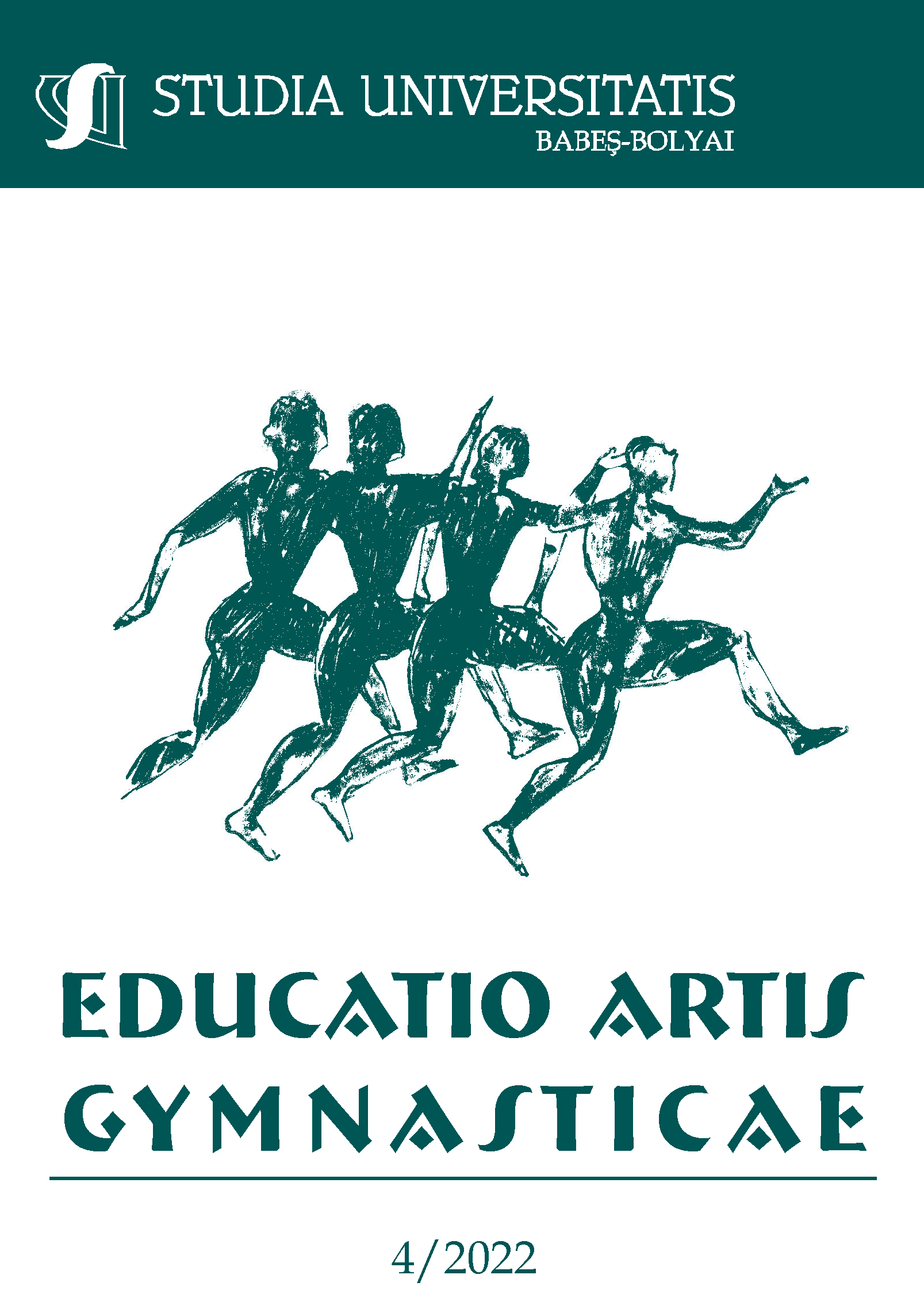STUDY ON THE UNDERSTANDING AND PERCEPTION OF PHYSICAL LITERACY AMONG PHYSICAL EDUCATION AND SPORT TEACHERS IN ROMANIA
DOI:
https://doi.org/10.24193/subbeag.67(4).29Keywords:
Physical literacy, teachers, understanding, perceptionAbstract
Introduction: Physical literacy (PL) is a concept that, in recent years, has earned notoriety within the field of physical education and has become a focus point in schools with physical education and sports programs. Physical education lessons represent an ideal setting for fostering and developing physical literacy, and the teacher plays an essential role in its development. The physical education teachers' choices during the lesson influence what students learn and whether the objective of physical literacy is achieved. Objective: The purpose of this study was to investigate the understanding and perception of PL among Romanian physical education and sport teachers. Material and method: The participants in this study were 169 physical education and sport teachers (42% female and 58% male) from Romania, most of them from the western part of the country (86,39%). This study was conducted using the questionnaire survey method. A questionnaire that assessed the teachers’ understanding and perception towards physical literacy was applied. The collected data was analyzed using the IBM SPSS Statistics 20. Results: The main results indicate that there is a positive and moderate correlation between the understanding and perception of PL among Romanian physical education and sport teachers (ρ = .454, p <0.001). Conclusions: It is concluded that the understanding and perception of the concept of PA are positively associated, which highlights the need for teachers to be informed about PA in order to optimize the teaching process.
References
Brown, D. M. Y., Dudley, D. A. & Cairney, J. (2020). Physical Literacy Profiles Are Associated with Differences in Children’s Physical Activity Participation:
A Latent Profile Analysis Approach. J. Sci. Med. Sport, 23, 1062–1067.
Essiet, I. A., Warner, E., Lander, N. J., Salmon, J., Duncan, M. J., Eyre, E. L., & Barnett, L. M. (2022). Exploring Australian teachers’ perceptions of physical literacy: a mixed-methods study. Physical Education and Sport Pedagogy, 1-20.
Graham, G., Holt/Hale, S. A., & Parker, M. (2013). Children moving: A reflective approach to teaching physical education. New York, NY: McGraw-Hill Companies.
Hills, A. P., Andersen, L. B. & Byrne, N. M. (2011). Physical activity and obesity in children, British Journal of Sports Medicine;45:866-870.
Nelson, M. C., Neumark-Stzainer, D., Hannan, P. J., Sirard, J. R. & Story, M. (2006). Longitudinal and secular trends in physical activity and sedentary behavior during adolescence. Pediatrics, 118 (6), e1627–e1634.
Obesity and overwheight (9 june 2021), https://www.who.int/news-room/fact-sheets/detail/obesity-and-overweight#cms.
Pop, C. L. (2019). “Physical and Health Education Against Childhood Obesity in Romania”. Marathon, Department of Pshisycal Education and Sport, Academy of Economic Studies, Bucharest, Romania, vol. 11(2), December, pages 98-102.
Robinson, D. B., Randall, L., & Barrett, J. (2018). Physical Literacy (Mis)understandings: What do Leading Physical Education Teachers Know About Physical Literacy? Journal of Teaching in Physical Education, 37(3), 288-298. Retrieved Oct 7, 2022
Roetert, E. P. & MacDonald, L. C. (2015). Unpacking the physical literacy concept for K-12 physical education: what should we expect the learner to master? J. Sport Health Sci. 4, 108–112. doi: 10.1016/j.jshs.2015.03.002
Roetert, E. P., & Couturier MacDonald, L. (2015). Unpacking the physical literacy concept for K-12 physical education: What should we expect the learner to master? Journal of Sport and Health Sciences, 4, 108-112.
Roetert, E. P., & Jefferies, S. C. (2014). Embracing physical literacy. Journal of Physical
Stoddart, A. L. & Humbert, M. L. (2021). Teachers’ Perceptions of Physical literacy. The Curriculum Journal, 32: 741-757. https://doi.org/10.1002/curj.107
Stoddart, A. L., & Humbert, M. L. (2021). Room to grow: Teachers’ knowledge and understanding of physical education and physical literacy. Curriculum Journal. https://doi.org/10.1002/curj.107
Stoddart, A., & Humbert, L. (2017). “Physical Literacy Is…? What Teachers Really Know.” RevuephénEPS/PHEnex Journal, 8 (3): 1–18.
Tomaczkowski, L. & Klonowska, J. (2020). Physical activity of school children and youth. Balt J Health Phys Act.;12(2):83-87. doi: 10.29359/BJHPA.12.2.09.
United Nations Educational, Scientific and Cultural Organization (UNESCO) (2015). Quality Physical Education(QPE): Guidelines for Policy-Makers. Paris: UNESCO Press.
Whitehead, M. (2010). Physical literacy: Throughout the lifecourse. London, UK: 658 Routledge.
Whitehead, M. (2013). Definition of physical literacy and clarification of related issues. ICSSPE Bulletin, 65(1.2).
Downloads
Published
How to Cite
Issue
Section
License
Copyright (c) 2022 Studia Universitatis Babeș-Bolyai Educatio Artis Gymnasticae

This work is licensed under a Creative Commons Attribution-NonCommercial-NoDerivatives 4.0 International License.



